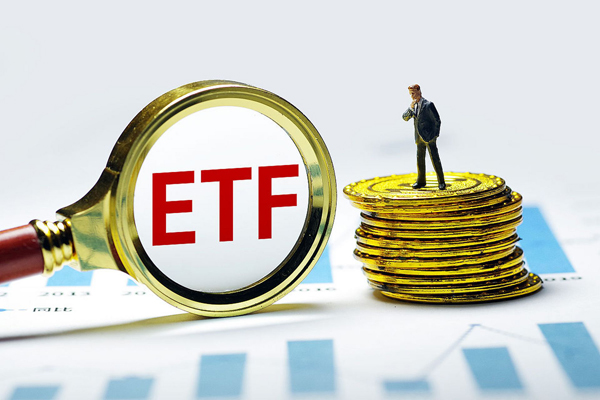What does a Bitcoin bear market look like in the ETF era?

Are we in a bear market right now? Overall, I think yes. Every altcoin is down 40% or more (with a few exceptions). With Bitcoin down 23% as of this writing and 30% off its previous local low, things are not looking good right now. This time around, every new altcoin or memecoin that makes millionaires has fallen so badly that selling on every bounce is almost justified given Bitcoin weakness and the broader macro and liquidity backdrop. Don’t worry though. As long as you don’t get yourself burned by being overly long on every 5% pullback, there will always be new opportunities. Also, I will say that I have no idea where Bitcoin will go next. I’m a trader who just knows what price I want to buy and sell at and then let the market do the rest. I want to speculate on what a Bitcoin bear market would look like given that we are now in the ETF traditional finance era. That is the purpose of this article.
Again, I have no idea what will happen next. I know I want to buy in the low $70s for a bounce, and I know I want to sell at resistance in the $88-90s. All I can do is make a contingency plan.
Scenario 1: Apathy and Exhaustion
This bear market will most likely be worse than the last one. I don’t mean in terms of price, I mean it could take years of volatility to bottom out. I think a 75% correction in a year is far less painful than a 50% correction in three years. Imagine you were an investor in the 70s trying to buy the S&P during stagflation. While there were plenty of opportunities, it took 7 years to make new highs (1973-1980). Also, the second downtrend in the 70s took 2 years to complete a 50% correction. The first correction also took nearly 2 years to complete a 38% decline (November 1968 to June 1970). Also remember that this was a period of stagflation, which is high inflation and low or negative growth. In real terms, that 50% correction was much worse than it appeared. I’ll talk more about stagflation later because I think it’s a worst-case scenario for the broader economy.
Seven years of extremely brutal price action.
Nearly two years of continuous decline.
I would say that this decline was largely predictable and may not be obvious to crypto natives who spend 90% of their time trading obscure instruments with low liquidity requirements, but for those who are paying attention to US trade policy (tariffs), US domestic policy (DOGE, mass deportations), and valuations of large technology companies, they have been quietly exiting risk since November last year. I think this is the initial correction because these large pools of funds are exiting the market. This shifts the market to a defensive posture, causing people to hedge their positions at the slightest hint of downside risk, and with the adoption of various financial products for Bitcoin by traditional finance (CME futures, Ibit options, etc.), there is a lot of liquidity to buy and sell various hedging tools.
In my opinion, I can see a scenario unfolding that is absolutely devastating for crypto natives chasing green candlesticks. Everyone knows how bad the Bitcoin bear market has been. The 75% decline so far has been normalized, which is one of the reasons why people don't even want to participate in it. Despite its outperformance in terms of risk-adjusted returns, the volatility is too much for many people. However, there are now liquid markets to hedge this volatility and downside risk. Enter IBIT options. The painful slow-moving decline scenario could stem from the options market, and mechanically it would unfold like this. Larger players buy puts to hedge their spot exposure. Puts become very expensive, so market makers are happy to sell these options. Market makers need to hedge their short put positions by selling spot and remaining delta neutral, or adjust other positions. Many of these market makers will close short positions, buy spot, or adjust positions to restore delta neutrality as they approach option expiration. Assuming a low liquidity environment (bear market), this could lead to one of two things happening.
1. Spot buying pressure and short liquidation from market makers slows any downside movement near option expiration, causing prices to fall very slowly to their targets over several months, with lots of choppy and volatile action near option expiration.
Or
2. Buying pressure and short closing from market makers near option expiration is enough to drive prices higher, and when those puts expire, market makers close their short positions to restore delta neutrality. Volatility increases near option expiration, and everyone loses money except for those who sold puts at high premiums. This cycle continues until sellers overwhelm any passive buying, or more marginal sellers enter the market due to abandoning their positions.
Of course, this assumes a lot of things. As I said, this is not my base case, but it is certainly something to be aware of. In addition, if the premiums on puts are extremely high, it may indicate that people are afraid of a falling market, and if sellers overwhelm the market maker buying, the spot price may still fall. Hedging pressure from market makers is only one factor - it does not operate in a vacuum. In addition, if implied volatility rises significantly (pushing up those expensive premiums), market makers may use other instruments (such as futures or offsetting calls) to hedge, thereby diluting the direct impact on the spot price.
Again, this is the worst case scenario in my opinion, as every minor bounce is a silver lining for many who still think this is a bull market.
Regarding stagflation, it is a central banker's worst nightmare. It is a failure of the dual mandate of stable prices and balanced labor markets. High inflation low growth is once again the worst case scenario for the overall economy and absolutely disastrous for financial markets. The only thing I can see that would do well during stagflation is gold, and even then, would you feel comfortable chasing higher? Right now, there are early signs that stagflation is brewing. Core PCE has been revised up. GDP estimates are softening (which, to be fair, has a lot to do with government layoffs), and many market commentators are shouting stagflation as the new hot topic bait. I don't think it's likely to happen yet. I want to see more data to confirm this, as I'm not willing to build a multi-year thesis based on a few soft/hot indicators. I would also add that if you were a central banker, would you be willing to fail miserably on both sides of the dual mandate? Or would you sacrifice one to save the other? These central bankers have proven time and again that they would rather accept high inflation than face a disastrous deflationary spiral that threatens the foundations of the financial system. So, will they take the risk? Maybe they are too slow to react to a worsening economy. That is something I don’t know, but I am also not willing to experience. Therefore, I consider it a possibility and once I have enough confirmation, I will act.
Scenario 2: This time is no different
This is probably the better of the two bear market scenarios. Every crypto cycle ends the same way. Bitcoin peaks and in the frenzy of Bitcoin’s peak, people increase their leveraged exposure. Smart money exits and people start to get liquidated, leading to a sharp correction from the all-time high. Bitcoin slowly falls, with occasional rallies, but is rejected on retests and eventually goes further lower. An exchange or large fund or both collapses, leading to the final capitulation, a 70-80% drop from the all-time high, everyone declares the asset class dead, and during the brief consolidation at the bottom, people who sold near the top start to set the bottom.
I say this is the best case scenario because it offers a lot of opportunities. You get a once in a generation entry again. You have a chance to succeed quickly again. In this scenario, I think it would last up to 14 months at best.
I think this is less likely though. My reasoning is that the market is much more mature, liquidity is much higher, and many large holders are holding a lot of supply and not using much leverage at all. In more mature markets, extreme pricing efficiencies like an 80% pullback aren't a big deal because people have liquid options to hedge their exposure. Again, something catastrophic and crypto-specific would have to happen for us to get there, which is possible, but it's a 50/50 chance at the moment. That said, altcoins could easily pull back 50-60% here again. Who are the marginal buyers of altcoins in this environment? Traditional finance is moving to risk aversion, crypto natives are exhausted, liquidity in the crypto market is fragmented, and everyone is waiting to see if Bitcoin will pull back another 20%. The only argument for "this time is different" is that altcoins are not having a true altcoin season, but why would that be? There are hundreds of new altcoins, none of which offer new utility. Furthermore, they do not need to hold value to provide that utility, and in many cases function better when they are cheap. I think in this scenario, capital will continue to rotate between various altcoins in a PVP type market, with no sector clearly outperforming the others, and the entire altcoin system will fall 90% from its all-time high. The only argument I can see for altcoins to rise in the near term is a major positive catalyst in the form of traditional financial adoption (RWA, stablecoins, etc.), but such things will take months or even years to fully build.
I want to end this section on a positive note. However, I also want to reiterate that this scenario becomes increasingly unlikely with each failed rally. I am neutral to slightly bearish in the medium term, having said that, I am often wrong, but I make sure to keep most of my funds when I am wrong in order to get outsized returns when I am right.
Scenario 3: This is a pullback similar to the summer of 2021
I think this is highly unlikely, but again, I am just a trader. I know nothing except what I want to buy and sell, at what price, and how much. Given the environment we are in, the best you can expect is that Bitcoin will do very little and just trade sideways for the next few months. I don't even think the most optimistic headlines right now can drive Bitcoin to a sustained rise. Every rally will be met with a big sell-off. Until the liquidity environment becomes more accommodative for risk assets, until trade policy is more certain, and until economic data shows moderate growth and slowing inflation, your main goal should be to preserve capital.
I will state again that my view in the medium term is neutral to slightly bearish. My base case is that we will not hit all-time highs until the economic and geopolitical uncertainties are largely resolved. However, you do not make and keep money in the financial markets by predicting. You make and keep money by preparing for each scenario and adjusting your position based on these events. From a trading perspective, if you plan to go long, remember to lock in profits on each rally. This is a great market for traders right now, and you can still profit from this market as long as you are patient and disciplined. Don't chase the upside, and don't be greedy. If you want to short, be careful. Bitcoin has fallen nearly 30%, and altcoins have fallen over 50%.
I will be the first to tell you that you will make more money by being optimistic. There is more upside to being long in the financial markets. However, this is one of those moments when you should be prepared for further downside. There are more things that can go wrong here, and even though a lot of things have gone right, the price still hasn't reacted favorably for any extended period of time.









